Astacolor Flakes – Premium Colour-Enhancing Discus Food, What’s the Best Food for Discus Fish? Discover Premium Nutrition That Elevates Your Fish’s Beauty and Overall Wellbeing, Supports Healthy Growth and Color
£20.00 – £350.00
Welcome these beautiful discus fish into your aquarium with Astacolor Flakes, premium color-enhancing dry fish food. This high-quality discus diet promotes vibrant colors and healthy growth, ensuring your graceful companions flourish in a loving home. Ideal for aquarists seeking beauty and wellbeing.
Species Introduction
The discus fish, scientifically known as Symphysodon, is a stunning freshwater species that hails from the Amazon River basin in South America. These beautiful aquatic companions are renowned for their vibrant colors and unique disc-like shape, which makes them a favorite among aquarium enthusiasts. Discus fish thrive in the warm, soft waters of their natural habitat, characterized by dense vegetation and slow-moving currents. In the wild, they often inhabit areas with plenty of hiding spots and breeding grounds, making it essential for aquarists to replicate these conditions in a home aquarium. By providing an environment that mimics their natural habitat, you can ensure the health and well-being of these magnificent fish.
Care Requirements Dashboard
| Optimal Living Conditions | |
|---|---|
| Water Temperature | 24-27°C (75-81°F) |
| pH Level | 6.5-7.5 |
| Water Hardness | 4-12 dKH |
| Minimum Tank Size | 80L (20 gal) |
| Salinity | Freshwater |
| Care Level | Beginner Friendly |
Natural Behavior & Temperament
Discus fish are known for their calm and gentle demeanor, making them a wonderful addition to community tanks. They exhibit fascinating social behaviors, often forming tight-knit groups or schools. In their natural habitat, discus fish are often seen swimming in pairs or small groups, which provides them with a sense of security. It is important to note that while they are generally peaceful, they can become territorial, especially during breeding. Understanding their social dynamics is crucial for maintaining harmony in the aquarium. Observing their interactions can be a rewarding experience, as these fish display a range of behaviors, from playful swimming to gentle nudging among companions.
Tank Setup Guide
Creating an ideal environment for discus fish requires careful consideration of tank setup. A spacious aquarium of at least 50 gallons is recommended to accommodate their size and social nature. The substrate should be soft and sandy, allowing for comfortable movement and foraging. Incorporating live plants not only enhances the aesthetic appeal but also provides hiding spots that mimic their natural habitat. Driftwood and rocks can also be added to create territories and shelter. It’s essential to maintain a stable water temperature and quality, as discus fish are sensitive to fluctuations. Regular water changes and a good filtration system will help keep the environment clean and healthy.
Water Quality Management
Maintaining optimal water quality is paramount for the health of discus fish. The ideal pH range for discus is between 6.0 and 7.5, with a temperature of 82-86°F. Regular testing of water parameters is essential to ensure stability. Hardness should be kept between 1-10 dGH, as discus fish prefer softer water. It’s crucial to perform regular water changes, ideally 25% weekly, to remove toxins and maintain clarity. A high-quality filtration system is also recommended to keep the water clean and well-oxygenated. Monitoring ammonia, nitrite, and nitrate levels will help prevent stress and illness in your aquatic companions.
Feeding & Nutrition
Discus fish thrive on a varied diet that includes high-quality flakes, pellets, and frozen foods. A color-enhancing diet is particularly beneficial for promoting their vibrant hues. Feeding should occur 2-3 times a day, with small portions that they can consume within a few minutes. It’s important to avoid overfeeding, as this can lead to water quality issues and health problems. Incorporating a mix of protein-rich foods, such as brine shrimp and bloodworms, will support healthy growth and vitality. Observing their feeding behavior can provide insights into their health and well-being, as active feeding is a good indicator of a healthy discus.
Compatibility Guide
Discus fish are generally peaceful but can be sensitive to aggressive tank mates. Ideal companions include other peaceful tropical fish such as tetras, corydoras, and peaceful barbs. Avoid keeping them with fin-nippers or overly aggressive species, as this can lead to stress and injury. When introducing new fish, it’s advisable to quarantine them first to prevent the spread of disease. Monitoring interactions in the tank is crucial, especially during the initial introduction phase. A well-planned community tank with compatible species will enhance the beauty and harmony of your aquarium.
Health & Wellness
Maintaining the health of your discus fish involves regular monitoring for signs of illness. Common issues include ich, fin rot, and stress-related diseases. It’s essential to observe their behavior and physical appearance for any changes. Providing a stress-free environment, maintaining water quality, and ensuring a balanced diet are key factors in preventing health problems. If you notice any signs of illness, such as lethargy, loss of appetite, or abnormal swimming patterns, it’s important to act quickly. Consulting with a veterinarian who specializes in fish can provide guidance on treatment options.
Breeding Information
Breeding discus fish can be a rewarding experience, but it requires a dedicated setup. A breeding pair will typically select a flat surface, such as a leaf or a clean rock, to lay their eggs. The ideal conditions for breeding include slightly acidic water with a temperature of around 84-86°F. After the eggs are laid, both parents will guard and care for the fry, which will hatch within 48 hours. It’s essential to provide a separate breeding tank to ensure the safety of the fry and to maintain optimal water conditions. Feeding the fry with infusoria or finely crushed flakes will support their growth during the early stages.
Acclimation Process
Introducing new discus fish to your aquarium requires a careful acclimation process to minimize stress. Begin by floating the sealed bag in the aquarium for about 15-20 minutes to equalize the temperature. After this, gradually mix small amounts of aquarium water into the bag over the course of an hour. This will help the fish adjust to the water chemistry of their new home. Once the acclimation is complete, gently release the fish into the tank without adding the bag water. This method ensures a smooth transition and helps prevent shock.
Long-term Care
Discus fish have a lifespan of 10-15 years when provided with proper care. As they grow, it’s important to monitor their size and adjust the tank environment accordingly. Regular water changes, a balanced diet, and a stress-free environment are essential for their long-term health. Keeping an eye on their social dynamics and ensuring compatibility with tank mates will also contribute to their well-being. By creating a nurturing environment, you can enjoy the beauty and grace of these fish for many years.
Natural Habitat Recreation
To truly appreciate the beauty of discus fish, recreating their natural habitat in your aquarium is crucial. This involves using soft substrates, such as sand, and incorporating live plants that mimic the dense vegetation of the Amazon. Adding driftwood and rocks can create hiding spots and territories, which are essential for their comfort. The use of natural decorations not only enhances the aesthetic appeal but also provides a sense of security for your fish. By replicating their environment, you can promote natural behaviors and improve their overall well-being.
Seasonal Care Adjustments
As seasons change, so too may the needs of your discus fish. During warmer months, it’s important to monitor the water temperature closely, as higher temperatures can lead to stress. In colder months, ensure that the aquarium heater is functioning properly to maintain a stable environment. Additionally, adjusting feeding schedules and portion sizes based on their activity levels can help maintain their health. Regularly observing your fish will allow you to make necessary adjustments to their care, ensuring they remain healthy and vibrant throughout the year.
Expert Tips
For those looking to provide the best care for their discus fish, expert tips can be invaluable. Consider keeping a journal to track water parameters, feeding schedules, and health observations. This can help identify patterns and make adjustments as needed. Additionally, investing in a high-quality filtration system will enhance water quality and reduce maintenance efforts. Joining online forums or local fish clubs can also provide support and advice from fellow enthusiasts. Remember, the key to successful discus care is patience, observation, and a commitment to creating a healthy environment.
Troubleshooting
Despite your best efforts, you may encounter challenges while caring for discus fish. Common issues include stress from aggressive tank mates, poor water quality, or dietary deficiencies. If your fish exhibit signs of stress, such as hiding or reduced appetite, reassess their environment and make necessary changes. Regular water testing can help identify issues before they escalate. If health problems arise, consult with a fish veterinarian for guidance on treatment options. Being proactive in troubleshooting will ensure your discus fish remain healthy and thrive in their aquatic home.
Scientific Background
Discus fish belong to the family Cichlidae and are part of the genus Symphysodon. They are closely related to other cichlids but are distinguished by their unique shape and coloration. Research into their behavior and biology has provided insights into their social structures and breeding habits. Conservation efforts are essential to protect their natural habitats, as deforestation and pollution threaten their populations in the wild. Understanding the scientific background of discus fish can enhance your appreciation for these remarkable creatures and inform your care practices.
Advanced Care Techniques
For experienced aquarists, advanced care techniques can take your discus fish keeping to the next level. Techniques such as breeding conditioning, selective feeding, and biotope creation can enhance the health and beauty of your fish. Implementing a routine that includes regular water changes, targeted feeding strategies, and environmental enrichment will promote natural behaviors and improve overall well-being. Additionally, staying informed about the latest research and advancements in fish care can provide new insights and techniques to enhance your aquarium experience.
Frequently Asked Questions
Q: How much Astacolor Flakes should I feed my discus fish?
Feeding your discus fish the right amount of Astacolor Flakes is crucial for their health and beauty. A general guideline is to offer 2-3 pinches of flakes per feeding, ensuring that they consume it within 2-3 minutes. Overfeeding can lead to poor water quality and health issues, so it’s vital to monitor their intake. Adjust the quantity based on the number of fish and their size; smaller fish may require less. Remember to feed them 2-3 times a day for optimal nutrition and colour enhancement.
✓ Expert Tip
Consider varying their diet with other high-quality foods to ensure a balanced nutrient intake.
Q: How frequently should I feed my discus fish Astacolor Flakes?
Discus fish thrive on a consistent feeding schedule, preferably 2-3 times a day. This frequency helps maintain their energy levels and supports their growth. When using Astacolor Flakes, ensure that each feeding is small enough for the fish to consume within a few minutes to prevent waste and maintain water quality. It’s essential to observe your fish during feeding times; if they seem uninterested, consider adjusting the quantity or frequency. A varied diet can also contribute positively to their overall health and colour.
✓ Expert Tip
Incorporate live or frozen foods occasionally to enhance their diet.
Q: Which fish species can consume Astacolor Flakes?
Astacolor Flakes are specially formulated for discus fish, but they can also benefit other species that thrive in similar conditions. Suitable tank mates include angelfish, certain tetras, and other peaceful cichlids. However, it is paramount to monitor how different species react to the flakes, as some fish may require different dietary compositions. Always ensure that your fish companions share similar water parameters and feeding habits to promote a harmonious tank environment.
✓ Expert Tip
Research individual species’ dietary needs to optimise their health.
Q: How should I properly store Astacolor Flakes?
To maintain the freshness and nutritional quality of Astacolor Flakes, store them in a cool, dry place away from direct sunlight. Ideally, keep the flakes in their original packaging, tightly sealed after each use. If you prefer transferring them to a different container, opt for an airtight jar to prevent moisture and air exposure. Proper storage can significantly extend the shelf life of the food, ensuring your fish receive the best nutrition possible.
✓ Expert Tip
Check the expiry date and avoid using expired food to maintain fish health.
Q: Will Astacolor Flakes affect my water quality?
Yes, like any fish food, Astacolor Flakes can impact water quality if not managed correctly. Overfeeding can lead to excess waste, which degrades water quality and can harm your fish. It is advisable to remove any uneaten flakes promptly after feeding. Regular water testing and maintenance will help keep parameters stable. A well-maintained filtration system will also assist in managing waste and ensuring a healthy environment for your aquatic companions.
✓ Expert Tip
Perform regular water changes to enhance overall water quality.
Q: Is Astacolor Flakes suitable for breeding fish?
Astacolor Flakes are an excellent choice for breeding discus fish, as they provide essential nutrients that support reproductive health. The high-quality ingredients promote growth and enhance colouration, which is particularly beneficial during the breeding process. It’s advisable to supplement their diet with live or frozen foods to further enrich their nutrition during this critical time. Maintaining optimal water conditions and a stress-free environment will also contribute positively to successful breeding.
✓ Expert Tip
Ensure breeding pairs are well-fed and healthy for optimal results.
Q: How do I transition my fish to Astacolor Flakes?
Transitioning your fish to Astacolor Flakes should be gradual to avoid digestive issues. Start by mixing a small amount of the flakes with their current food, gradually increasing the ratio over several days. Monitor your fish during this period to ensure they accept the new food. If they exhibit any signs of stress or refusal to eat, revert to their previous diet and try again later. This careful approach ensures a smooth transition and helps your fish enjoy the nutritional benefits of Astacolor Flakes.
✓ Expert Tip
Patience is key; allow your fish to adjust at their own pace.
Q: What ingredients are contained in Astacolor Flakes?
Astacolor Flakes are crafted from high-quality ingredients designed to promote health and colour enhancement in discus fish. Key components typically include fish meal, spirulina, and various vitamins and minerals essential for growth. Spirulina is particularly beneficial for colour enhancement, while the protein content supports overall health. Always check the packaging for a detailed ingredient list, as formulations may vary. Understanding these components can help you assess how well the food meets your fish’s dietary needs.
✓ Expert Tip
Look for foods that list whole ingredients for optimal nutrition.
Q: How do I adjust feeding amounts for different fish sizes?
When feeding a mixed group of discus fish, adjust the amount of Astacolor Flakes based on the size and age of each fish. Smaller fish will require less food, while larger specimens may need a bit more. A good rule of thumb is to offer a portion that can be consumed within a few minutes, scaled according to the size of your fish. Monitor their feeding habits closely, and feel free to adjust as necessary to ensure all fish are receiving adequate nutrition without overfeeding.
✓ Expert Tip
Feed smaller amounts more frequently for optimal growth.
Q: Can Astacolor Flakes enhance fish colouration?
Yes, Astacolor Flakes are specifically designed to enhance the natural colouration of discus fish. The inclusion of spirulina and other colour-enhancing ingredients promotes vibrant hues, making your fish appear more stunning in their aquatic environment. Regular feeding can lead to noticeable improvements in colour over time, especially when combined with a balanced diet. Observing your fish’s colour changes can be a rewarding aspect of fish-keeping, reflecting their health and well-being.
✓ Expert Tip
Combine with appropriate lighting for enhanced visual effects.
Q: What feeding techniques work best with Astacolor Flakes?
When feeding your discus fish with Astacolor Flakes, consider spreading the flakes across the water surface to mimic natural feeding behaviours. This technique allows multiple fish to feed simultaneously and reduces competition. Additionally, you may wish to soak the flakes briefly in tank water before feeding, which can make them easier for younger or smaller fish to consume. Observing how your fish interact with the food can help you refine your feeding techniques for optimal results.
✓ Expert Tip
Experiment with feeding methods to find what your fish prefer.
Q: How does Astacolor Flakes support fish health and growth?
Astacolor Flakes provide a balanced blend of proteins, vitamins, and minerals essential for the health and growth of discus fish. The high protein content supports muscle development and energy levels, while vitamins enhance immune function, helping fish resist diseases. Regular feeding with these flakes can lead to improved growth rates and overall vitality. Coupled with proper tank maintenance and water quality, Astacolor Flakes can play a significant role in the long-term health of your aquatic companions.
✓ Expert Tip
Monitor growth and health regularly to adjust feeding as needed.
| size | 500ml/100g, 5l / 1kg, 11L/2kg |
|---|





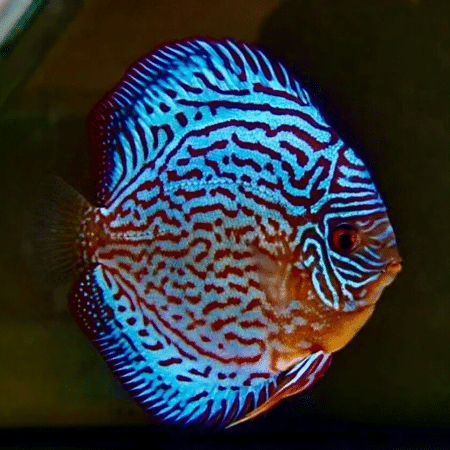
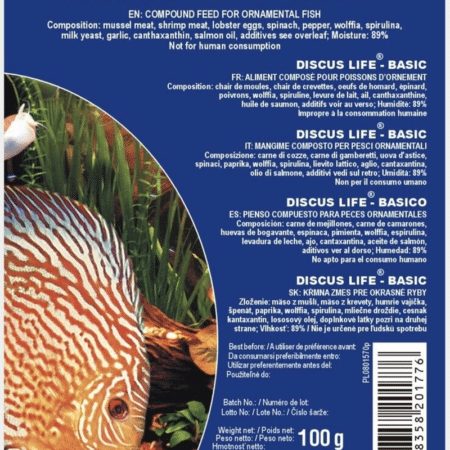
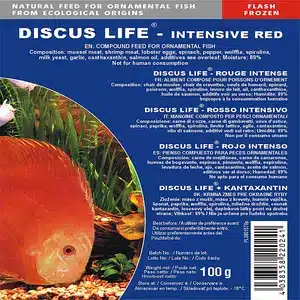
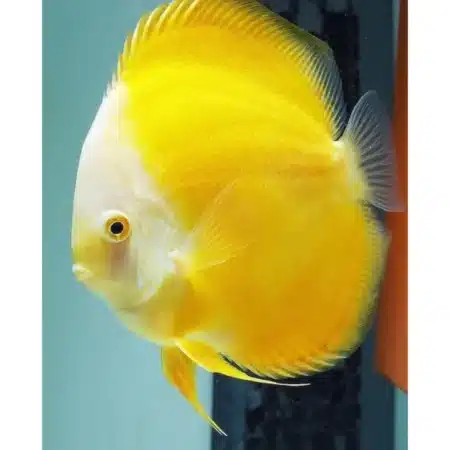


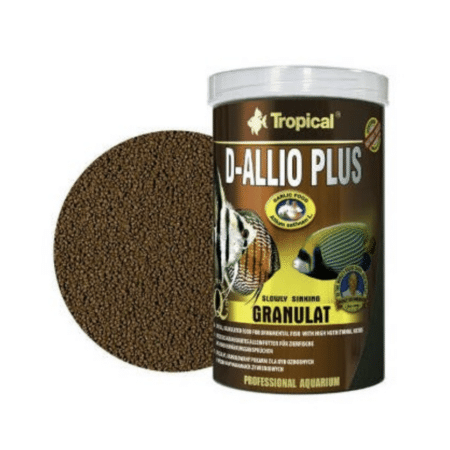
Emily Rodriguez (verified owner) –
As a passionate discus fish owner, I’ve always searched for the best food to bring out their vibrant colors while ensuring their health. After using Astacolor Flakes for about two months, I can confidently say this is the best choice I could have made! My discus fish have never looked better; their colors are incredibly vivid, and they seem so much more lively. The flakes are perfectly sized for my fish, making it easy for them to eat without any waste. I previously tried other brands, but they left my fish looking dull and less active. With Astacolor, I’ve noticed a visible improvement in their overall wellbeing, and it’s clear they love the taste! One minor concern is that the flakes can create a bit of residue in the tank if not monitored, but regular cleaning takes care of that. For anyone serious about discus fish care, I wholeheartedly recommend Astacolor Flakes. Trust me, your fish will thank you!
Mark Henderson (verified owner) –
As a passionate aquarium hobbyist, I am always on the lookout for high-quality food that promotes the health and vibrant colors of my discus fish. After using Astacolor Flakes for about three weeks, I couldn’t be happier with the results! My discus have become noticeably more vibrant, showcasing rich reds and yellows that are simply stunning. The ingredients are top-notch, and you can tell the flakes are packed with nutrients that contribute to their overall wellbeing.
I previously tried a couple of other brands, but they just didn’t provide the same level of nutrition. What I love about Astacolor is how the flakes float for a while, giving my fish time to eat without it sinking too quickly. This food is perfect for anyone serious about a discus diet!
One minor concern I noticed is that the flakes could be a bit larger for my smaller fish, but they seem to adapt just fine. I would absolutely recommend this to any discus owner looking to enhance their fish’s beauty and health. Shipping was quick, and the packaging kept everything fresh. I’ll definitely be purchasing more!